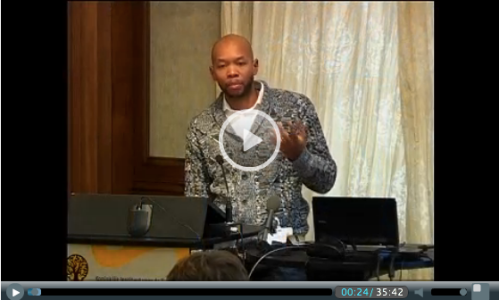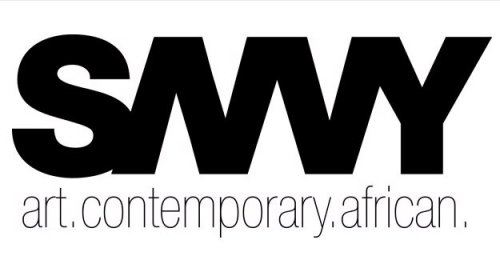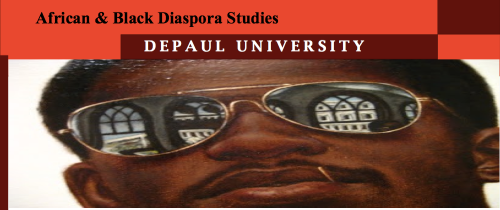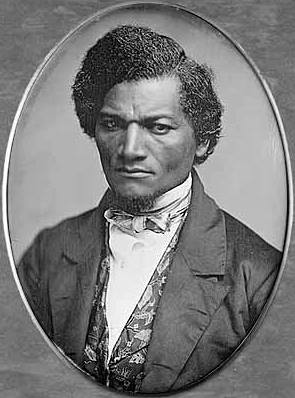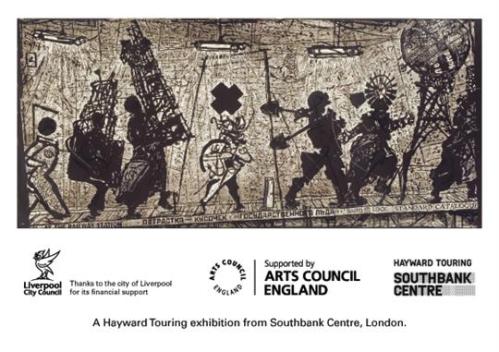We are pleased to present below the programme for the upcoming conference 1804 & Its Afterlives to be held at Nottingham Contemporary on the 7-8 December 2012. This event takes place in conjunction with Nottingham Contemporary’s current exhibition Kafou: Haiti, Art and Vodou and will include as speakers, specialists across many disciplines in the field of Haitian and Caribbean Studies.
The event is free, to book a place via the Nottingham Contemporary site click here.
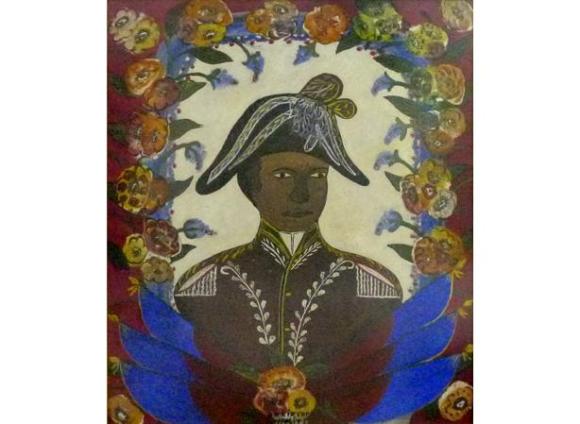
Hector Hyppolite, Henry Christophe, Collection Musée Nader, Port-au-Prince
1804 & Its Afterlives
The Space, Nottingham Contemporary
Friday 7th December
—————————————————————————————————–
10.30 Arrivals & Registration (Refreshments served in The Space Foyer )
Session One 11h-13h
11.00 Introduction
11.30 Keynote Lecture, Colin Dayan: ‘The gods in the trunk (or writing in a belittered world)’:
I offer a context for refiguring our understanding of the supernatural, a recognition of attentiveness that asks: What could we feel if we could feel what we experience sufficiently? What I once called Marie Vieux Chauvet’s ‘literary fieldwork’ becomes a way to think anew about the making of fiction and the meaning of ritual. With vodou practice-and the threats now against its very existence-as my prompt, I go beyond the borders of academic decorum to substantially political encounters. In asking what remains alive, vivid, and unsettling outside our conventions and characterizations, I question the meaning of ‘justice’ and the reach of ‘cruelty,’ as well as the uses of ‘reason.’ By reshuffling our conceptual schemes, my objective is to give the claims of spirit the color and shape of matter. Finally, I want to breach the gap between body and mind, dead and living, human and non-human. How else can we work and think through this time of extinctions?
12.30 Conversation & Q&A with Colin Dayan
Chaired by Leah Gordon & Alex Farquharson (Curators, Kafou, Haiti Art & Vodou)
Session Two 14h-16.30h
14.00 Charles Forsdick, Introduction
14.30 Nick Nesbitt: Legacies of 1804: Anti-slavery, Decolonization and the Critique of Violence
15.00 Dick Geary: The Contradictory Legacy of Haiti for Slave Revolt in Brazil
15.30 Conversation with Dick Geary & Nick Nesbitt, Chaired by Charles Forsdick
16.00 Q&A
16.30 Exhibition visit Kafou, Haiti Art & Vodou – with Alex Farquharson & Leah Gordon
17.30 Drinks for speakers and delegates served in The Space – launch of Kafou catalogue.
—————————————————————————————————–
10.30 Arrivals & Registration (Refreshments served in The Space Foyer )
Session Three 10.45h-13.30h
10.45 Introduction by Philip Kaisary
11.00 Michael Largey:
1804 and Musical Memory: Occide Jeanty and Recombinant Mythology in Haiti
11.30 Martin Munro:
The Revolution’s Ghosts: Dessalines, the Chimères, and Apocalyptic Creolization
12.00 Barbara Browning:
Catching the Rhythm: Infectious Politicization in the Figuring of Haitian Dance Since the Revolution
12.30 Conversation with Barbara Browning, Martin Munro & Michael Largey & Q&A
Chaired by Philip Kaisary
Session Four 14.30-17h
14.30 Introduction
14.45 Millery Polyne:
The Commercial and Ideological Uses of Haiti-from Post U.S. Occupation to Post-Earthquake
15.15 Matthew J Smith:
Haitian Revolutions: Politics, Conflicts, and the Shadow of 1804
15.45 Conversation with Millery Polyne and Matthew J Smith, Chaired by Nick Nesbitt
16.15 Q&A
17.00 Close
Speakers Biographies
Colin Dayan is Robert Penn Warren Professor in the Humanities at Vanderbilt University, and expert in literary, legal and religious studies of the Americas, and author of A Rainbow for the Christian West: Rene Depestre‘s Poetry; Fables of Mind: An Inquiry into Poe’s Fiction(1987); Haiti, History, and the Gods and, most recently, The Law is a White Dog: How Legal Rituals Make and Unmake Persons. In Haiti, History, and the Gods Dayan investigated how Haiti is created and recreated in fiction and fact, text and ritual, discourse and practice. Uncovering a silenced, submerged past, she argued provocatively for the consideration of both Vodou rituals and narrative fiction as repositories of history.
Leah Gordon (Chair) is an artist and curator. She has produced a body of work on the representational boundaries between art, religion, anthropology, post-colonialism and folk history and her film and photographic work has been exhibited internationally. She has previously served as adjunct curator for the Haitian Pavilion at the 54th Venice Biennale, was on the curatorial team for the recent ‘In Extremis’ exhibition at the Fowler Museum, UCLA, and is curator of ‘Kafou: Haiti, Art and Vodou’at Nottingham Contemporary.
Nick Nesbitt is Professor of French & Italian, Princeton University;his publications include Voicing Memory: History and Subjectivity in French Caribbean Literature and Universal Emancipation: The Haitian Revolution and the Radical Enlightenment – which explores the Haitian Revolution as a fundamental event of the Age of Revolution and Enlightenment, in relation to key thinkers in contemporary political philosophy. He is editor of Toussaint Louverture: The Haitian Revolution and co-editor with Brian Hulse of Sounding the Virtual: Gilles Deleuze and the Philosophy of Music.
Dick Geary is the former Director of Institute for the Study of Slavery at University of Nottingham; he published extensively on European labour history before researching slave labour and unpaid work in Brazil and Western Europe, emphasising the role of ideology, religion, and ritual. Geary´s main field of research is the European labour movement and the intellectual history of Marxism. More recently he has been developing a research on the history of slavery. His methods include both social history and comparative studies.
Charles Forsdick (Chair) is James Barrow Professor of French at the University of Liverpool. His research focuses principally on exoticism, travel literature, postcolonial literature in French, the francophone dimensions of postcolonial theory, the contemporary French novel and representations of the Haitian revolutionary Toussaint Louverture.
Michael Largey is Professor of Ethnomusicology and Area Chair of Musicology at Michigan State University College of Music. He is a specialist in Caribbean music, specifically Haitian classical and religious music. He is author of Vodou Nation: Haitian Art Music and Cultural Nationalism in which he examined how elements of Vodou music were used by elite composers to express understandings of nasyon (nation) from the 1890s through to the US military occupation of 1915-1934.
Martin Munro is Director Winthrop-King Professor of French and Francophone Studies at Florida State University. He previously worked in Scotland, Ireland, and Trinidad. His recent publications include: American Creoles: The Francophone Caribbean and the American South; Different Drummers: Rhythm and Race in the Americas; Edwidge Danticat: A Reader’s Guide; and Haiti Rising: Haitian History, Culture, and the Earthquake of 2010. He is currently working on the theme of the apocalypse in the Caribbean.
Barbara Browning is Associate Professor in the Department of Performance Studies at the Tisch School of the Arts, New York University. Her major interests lie in Brazil and the African diaspora; dance ethnography; race, gender and postcoloniality; fiction and performance. In Infectious Rhythm Browning analysed how the African cultural diaspora has continued to be represented in terms of metaphors of disease and contagion. She continues to merge practical engagement of body practices with her scholarly work, which broadly addresses performance and politics in the African diaspora.
Philip Kaisary (Chair) is Assistant Professor of Law at University of Warwick, where he received his Ph.D in English and Comparative Literary Studies. His research interests are interdisciplinary and range across the fields of legal and literary studies, human rights, postcolonial studies, and black Atlantic studies with particular focus on disaster law and the cultural impact of disasters; the Haitian Revolution; and the legal and cultural history of slavery and anti-slavery. He is currently revising his dissertation for publication.
Matthew J. Smith is Lecturer in History at University of the West Indies; his main area of research is in Haitian politics and society after the U.S. occupation (1915-1934) and Haitian regional migration in the nineteenth century and early twentieth century. He is author of Red and Black in Haiti: Radicalism, Conflict, and Political Change, 1934-1957, which argues that the period from 1934 to the rise of Dictator Francois Duvalier, was modern Haiti’s greatest moment of political promise.
Millery Polyné is Assistant Professor of American Studies, Gallatin School at New York University. His research interests highlight the history of African American and Afro-Caribbean cultural, political, and economic initiatives in the 19th and 20th centuries; dance, jazz, sports and urban memory. He is the author of From Douglass to Duvalier: U.S. African Americans, Haiti and Pan Americanism 1870-1964.


